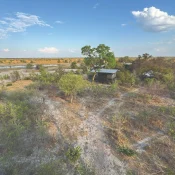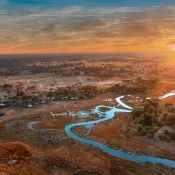
MANAGING WILDLIFE RESOURCES IN THE ZAMBEZI VALLEY
By Martin Chemhere
The Zambezi Valley, a vital biodiversity hotspot in Zimbabwe, faces increasing pressure from poaching, illegal wildlife trade, deforestation, and the impacts of climate change.
Recognizing these threats, the Global Environment Facility (GEF) has funded the “Strengthening Biodiversity and Ecosystems Management and Climate-Smart Landscapes” project in the Mid to Lower Zambezi region.
This initiative promotes an integrated landscape approach to managing wildlife resources, carbon sequestration, and vital ecosystem services.
The project addresses the core challenges by focusing on reducing key threats to wildlife, habitats, and local livelihoods. It acknowledges the interconnectedness of human well-being and environmental health, emphasizing community involvement in conservation efforts. This approach aims to create a sustainable balance between human needs and wildlife preservation.
Significant achievements demonstrate the project’s impact. Beekeeping training has benefited 1,200 individuals, providing alternative income sources and reducing reliance on unsustainable practices.
Small grants projects have further empowered 8,000 people, supporting community-led conservation initiatives. Access to clean water has been improved through the drilling of 20 boreholes.
Furthermore, the revitalization of 73 environmental committees, including three main committees and 70 sub-committees, has strengthened local governance and community participation in natural resource management.
These achievements highlight the project’s success in fostering sustainable development and safeguarding the Zambezi Valley’s rich biodiversity for future generations.
All Categories
Recent Posts
Kazuma Safari Camp –
Kariba’s Kumabirira Lodge Is The Perfect Hideaway
Contact Us
+263 789 532 918




